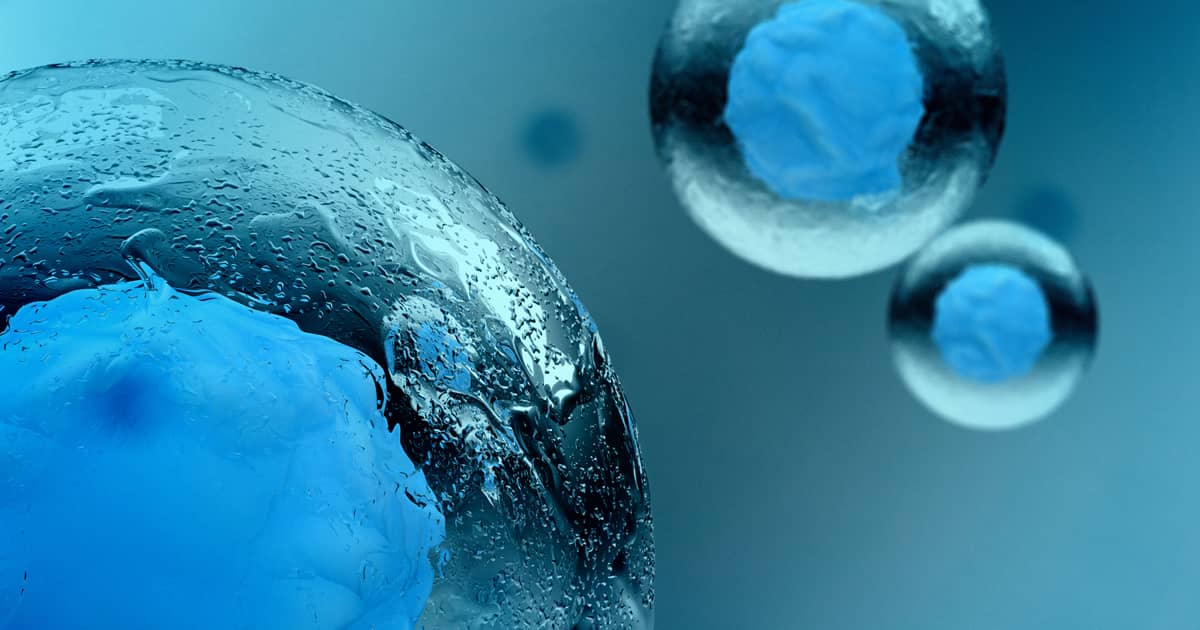The quest to find a reliable HIV cure has been ongoing ever since the start of the AIDS pandemic. Luckily, science and technology both evolve. Recent announcements suggest a lot of progress has been made, offering hope for the future.
Third Person Cured After Receiving Stem Cell Treatment
A 53-year-old man from Germany has become the third person to be declared HIV-free after receiving a stem cell transplant from a donor. The treatment is typical for leukaemia and it has been used to treat an HIV-positive individual two times before.
The so-called Dusseldorf patient became HIV-positive in 2008. In 2011, he developed leukaemia. Because chemotherapy killed off the man’s blood stem cells in the bone marrow, he required a stem cell transplant.
Over the course of the treatment, doctors found a donor with stem cells featuring an important mutation – the ability to disable the CCR5 receptor. This is the receptor that the human immunodeficiency virus uses to infect immune cells.
Because of the transplant, the Dusseldorf patient stopped receiving immunosuppressing drugs (to keep the body from rejecting the transplant). His antiretroviral medications were also discontinued in 2018. Eventually, the man was declared HIV-negative due to the fact that his viral load became undetectable.
Today, the Dusseldorf patient is still doing fine and being medication-free. Follow-ups with the other people who received stem cell transplants show similar results.
A Promise for a Cure?
While the news is definitely exciting, it’s still too early to start dreaming boldly about a mass-manufactured, readily available HIV cure.
There are several reasons why stem cell transplants aren’t considered a feasible option for HIV treatment right now.
Bone marrow transplantation is a risky process. Some patients may suffer life-threatening problems as a result of receiving the transplant. Serious infections and graft-versus-host disease are the most common complications. In the second case, the transplanted cells begin attacking the recipient’s body.
The fact that antiretroviral therapy exists and can be used to prevent the virus from multiplying also has to be accounted for. This is a much simpler approach that comes with limited risks in comparison to stem cell transplants. Because the medications are already here, chances are that the stem cell protocol isn’t going to be taken a step further.
Researchers also have to evaluate the specifics of treating HIV-positive individuals. Whenever a bone marrow transplant occurs, the immune system is virtually wiped out and “restarted.” That could carry some serious risk for people who are immunocompromised already. This is yet another reason why the stem cell transplant protocol is only prescribed for people who have HIV and another serious condition like cancer.
Working on CCR5 blocking, however, can be promising. There are alternative ways in which the CCR5 receptor can be disabled.
Gene editing is one possibility. Through this innovative approach, scientists may be capable of mutating the CCR5 gene to specifically prevent the replication of the virus in people who are HIV-positive. There’s a long way to go but the possibilities and the knowledge are there.
The History of Stem Cell Transplants in HIV-Positive People
Stem cell transplants are used in HIV patients only when there’s no alternative and the people need this particular cancer treatment.
The first person to receive such a treatment and become HIV-negative is the Berlin patient. In 2007, Timothy Ray Brown made history after getting a stem cell transplant. Diagnosed with HIV in the 1990s, Brown eventually required a treatment for leukaemia. The oncologist working on the case got the idea to seek a donor who may be “immune” to the human immunodeficiency virus. This way, the transplant addressed both of Brown’s problems.
The London patient is the second person to undergo the procedure and reverse their HIV-positive status.
Adam Castillejo’s story appeared in the media in 2019. At the time he required leukaemia treatment, Castillejo has been on antiretroviral medications for a period of 18 months. Once again, he received stem cells from a donor that didn’t express the CCR5 gene. Within 30 months of the transplant, Castillejo’s status was confirmed as HIV-negative.
HIV Is Not a Death Sentence
Every person diagnosed with HIV immediately starts worrying about the future and how much time they have left.
Even in the absence of a cure, HIV has become a manageable condition today.
In fact, medications are so effective that the lifespan of HIV-positive individuals who are on ART therapy is comparable to that of their healthy peers.
Apart from medications, other innovative approaches exist to potentially prevent an infection altogether. HIV pre-exposure prophylaxis (PrEP) and HIV post-exposure prophylaxis (PEP) are medications that can be taken before or after suspected exposure. When taken correctly, these medicines reduce the risk of becoming infected exponentially. The good news is that HIV PEP, PrEP and antiretroviral medications are all readily available.
Men’s health clinics like Shim Clinic in Singapore provide opportunities for the effective management of sexually transmitted infections like HIV. You can come to Shim Clinic and get tested or receive a professional and confidential information about prevention, management and the treatment of the most common STDs. Alternatively, you can contact us now to have your most pressing questions answered.

